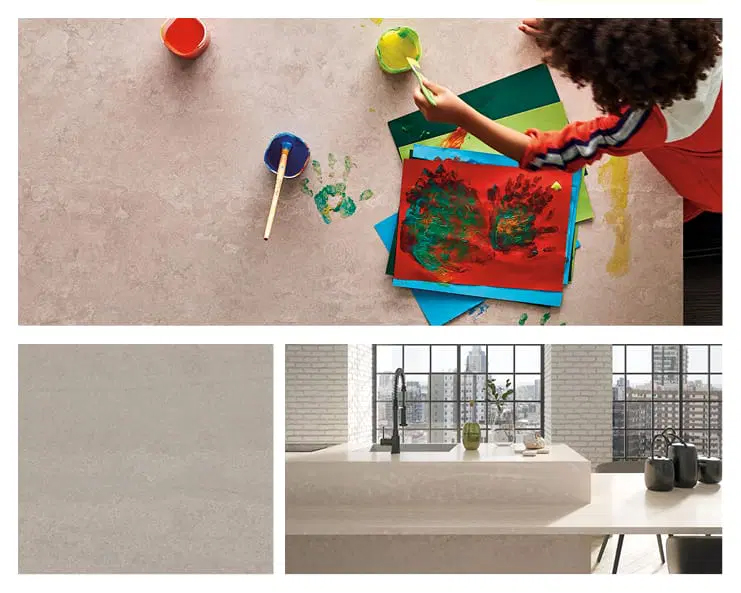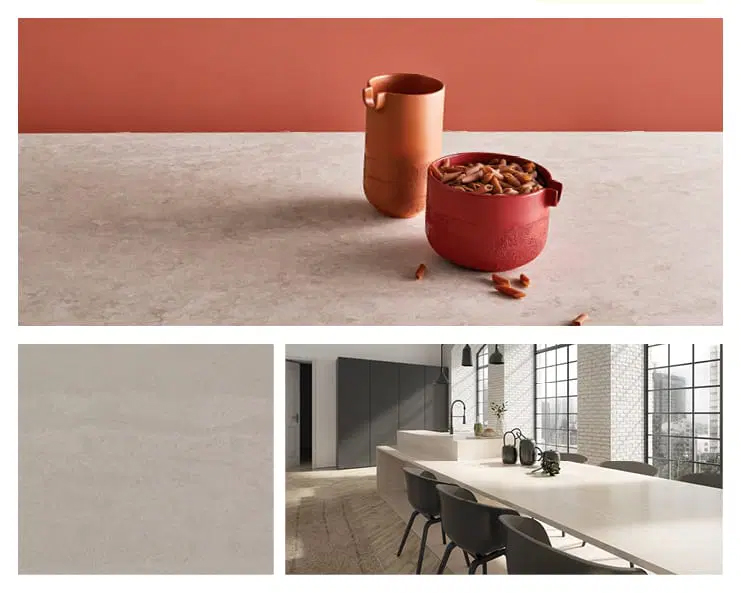Caesarstone is proud to announce our first Environmental Product Declaration (EPD)
6 min read
As more people consider how to make their homes more sustainable through a desire to minimize their impact on the environment, live healthier, and conserve resources, more and more home products are becoming more sustainable, as well. While commercial green building has been mainstreamed for some time (as of 2022, there are over 200,000 LEED certified green buildings around the world), it can still be difficult for a typical homeowner to decipher which products are green, and what exactly that means. The architect & design community is following suite – while there are some professionals who specialize in green building, there are many others who are interested in integrating green, sustainable products into their work, but it can be challenging to know where to start, and which labels to trust.
At Caesarstone, we have been creating countertops from natural materials for over 35 years. Today, millions of people around the world have access to safe, durable, beautiful surfaces for their homes through our innovative, industry leading products. As part of our ongoing commitment to sustainability, we continue to make significant strides in research and development to drive the evolution of engineered stone and create the next generation of surfaces. Our first certified Environmental Product Declaration (EPD) is an important milestone in our sustainability journey, and helps guide us – and our customers – to understand the environmental impacts of our products in a more clear, transparent manner.
An Environmental Product Declaration (EPD) is a Type III declaration that quantifies environmental information on the life cycle of a product to enable comparisons between products that fulfill the same function. An EPD is a report which presents the environmental impacts of a product, including its impact on climate change, ozone depletion, land use, water use, and more. While EPDs are primarily used as business-to-business guidelines, they can also benefit consumers who are interested in learning more details about the environmental impacts of a product. Over 400 companies around the world have published EPDs on a wide variety of products, from construction and furniture products, to textiles, food and beverages.
To complete an EPD, a company conducts a life cycle assessment (LCA) of a product in accordance with international methodologies and standards of ISO 14040, ISO44:2006, 14020:2000, ISO 14025:2006, the International EPD System, ECO Platform rules EN 5804:2012+A2:2019/AC:2021, and specific Product Category Rules (PCRs). A cradle-to-grave LCA includes the environmental impacts associated with all stages of the life cycle of a product, from raw material extraction to manufacturing and distribution, including the disposal of the product after its use. EPD reports, therefore, contain comprehensive, detailed information about the particular environmental impacts of a specific product.
According to Architectural Digest, EPD is one of the “15 Sustainability Terms You Need to Know” in 2021.

EPDs can help companies improve their sustainability efforts, by pointing to the exact areas in the product’s lifecycle which have the biggest environmental impacts. In addition, EPDs can help architects & designers become more educated on the environmental impacts of a product and help guide their customers in a more knowledgeable way.
“EPDs signal a manufacturer’s commitment to measuring and reducing the environmental impact of its products and services, and to report these impacts in a hyper-transparent way.” – EPD International
At Caesarstone, we believe in leading by example, and we are dedicated to ensuring every phase of the product lifecycle is aligned with the highest standards of quality, safety, and environmental responsibility. We do this by selecting premium natural raw materials, creating an efficient, safe production process, and ensuring our products are completely safe and healthy for use in the home. Our commitment to the environment infuses all that we do, and we take pride in our ability to set new standards in innovation and craftsmanship, and to continue to set trends in the industry — all while pursing our devotion to environmentally responsible design and production, in all that we do.
“At Caesarstone, we are committed to sustainability through continued innovation of our products and greener production processes.” – Gili Harpaz, ESG Leader, Caesarstone
The Caesarstone EPD was released in October 2023. It provides environmental data for numerous colors, such as the Airy Concrete countertop (Model 4044) from our indoor collection, over a lifetime of 75 years. The EPD is an important step in our sustainability vision and adds to our library of accreditations and product certifications. (For a full list of Caesarstone accreditations, including LEED, Declare, Red List Declaration, SCS, GREENGUARD Gold, etc., please see LINK).

The EPD provides comprehensive details across the product lifecycle, with inputs and outputs measured across the various stages. These include:
The EPD will discuss the product’s environmental impact across 16 categories. A range of indicators were evaluated across the entire product lifecycle, such as fossil fuel used and freshwater consumed, and specific environmental impacts were quantified, including those for climate change, land use, resource use, such as minerals and metals, and more.

For Caesarstone, there were several benefits in conducting this EPD. First, we are committed to transparency. It is crucial for us to voluntarily disclose product information, so it is available to our customers and partners in the industry. Furthermore, we are dedicated to conducting rigorous product analysis based on internationally recognized methodologies, and obtaining third party certification that demonstrates our efforts and commitments.
Second, we are committed to our sustainability vision, and as we develop and manufacture our products, we constantly work to reduce the environmental impacts of both our products and our operations. At Caesarstone, we are focused on five environmental areas:
Our first EPD is an important step in helping us further identify and quantify our environmental impacts, across the entire product lifestyle, for additional information and data to help guide us in our environmental efforts.
Finally, we are dedicated to meeting the evolving needs of our customers. As more people become aware of the impacts of the products they are bringing into their homes, we recognize that our customers and partners rely upon us to provide products that meet the highest standards of quality, safety, and performance – including environmental performance.
We are proud to be forging a path towards a more sustainable and healthy future for our customers and partners, and we look forward to introducing additional EPDs in the near future. Stay tuned for more updates.
{{ subtitle }}
{{ i.desc }}
{{ subtitle }}
{{ subtitle }}